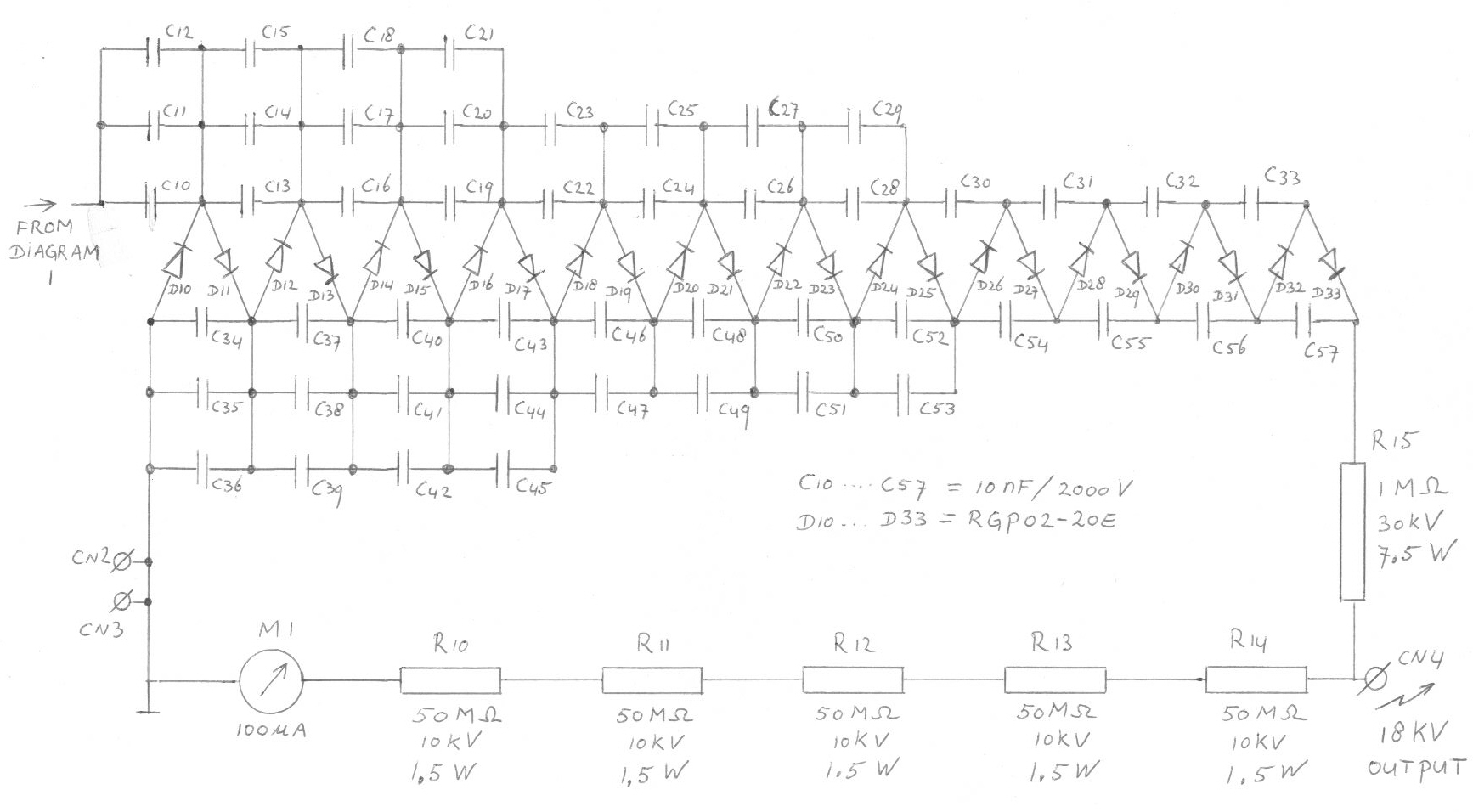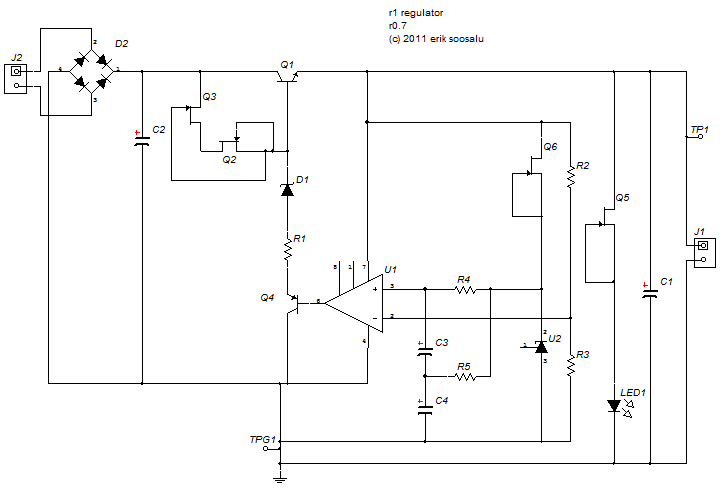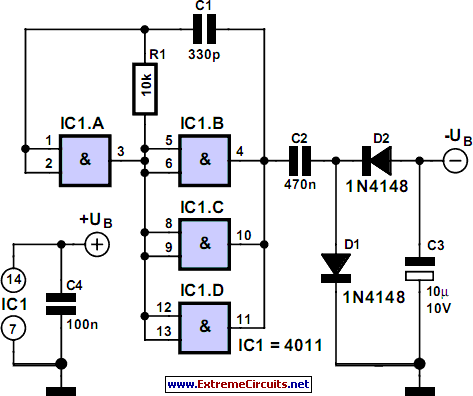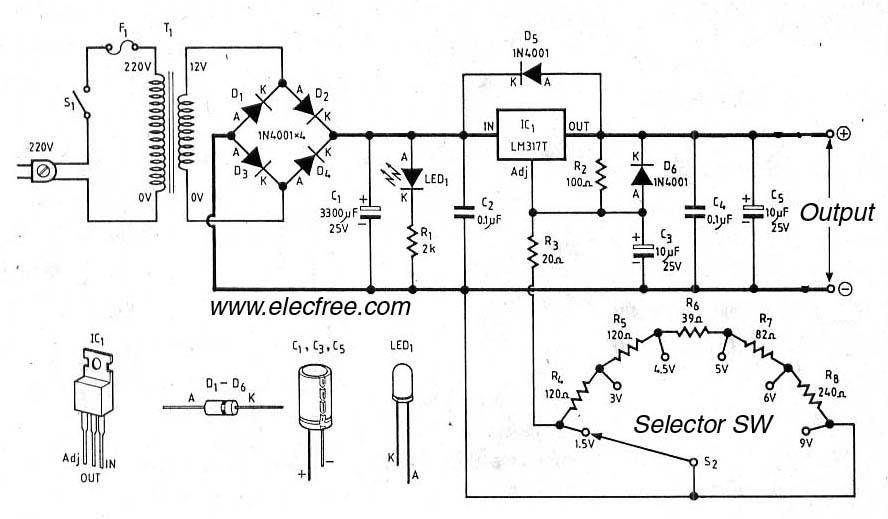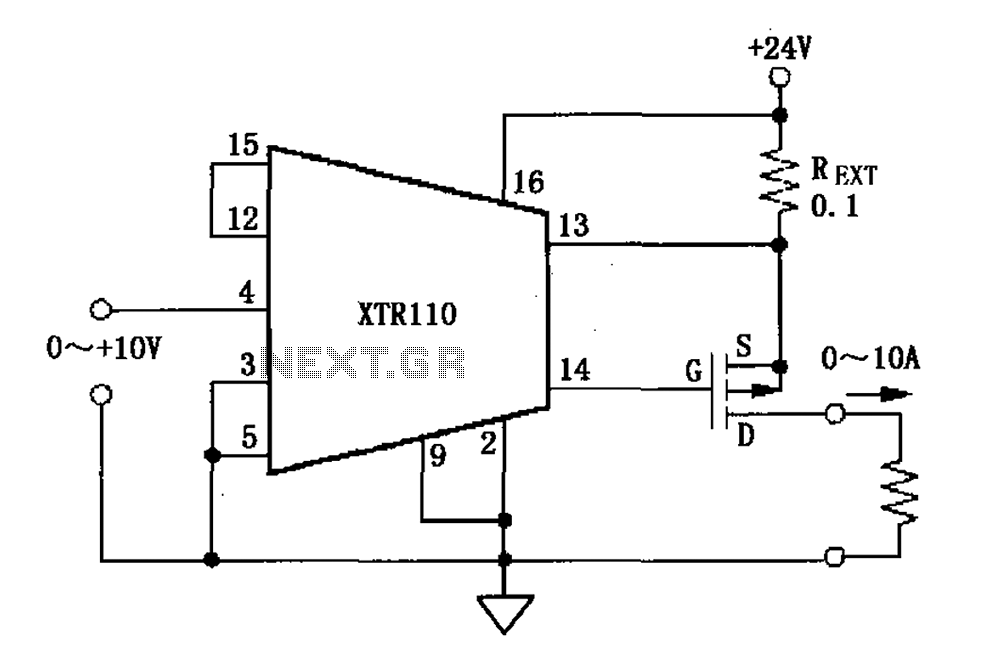
78XX Voltage Regulator Extension

This voltage regulator extension circuit allows for an increase in output current up to 10 A. The T1 power transistor is configured with a resistor in the emitter.
This voltage regulator extension circuit is designed to enhance the output current capacity of a standard voltage regulator, enabling it to supply up to 10 A. The main component, T1, is a power transistor that plays a critical role in this circuit. It operates in conjunction with a resistor placed in the emitter leg, which serves to stabilize the transistor's operation and improve linearity.
The circuit typically includes additional components such as capacitors for input and output filtering, ensuring stable voltage levels and minimizing ripple. A diode may also be included for protection against reverse polarity, which can safeguard the circuit from potential damage.
The design necessitates careful selection of the power transistor, as it must be capable of handling the increased current without overheating. Adequate heat sinking is essential to dissipate the heat generated during operation, ensuring reliable performance over extended periods.
Moreover, the circuit may incorporate feedback mechanisms to maintain voltage regulation under varying load conditions. This can involve additional resistors and operational amplifiers to create a closed-loop system that adjusts the output voltage dynamically based on the load demand.
In summary, this voltage regulator extension circuit is a robust solution for applications requiring higher current outputs, featuring a power transistor with an emitter resistor to enhance stability and performance, along with essential components for filtering and protection.With this voltage regulator extension circuit you can increase the output current up to 10 A. T1 power transistor has a resistor in the emitter and thus th.. 🔗 External reference
This voltage regulator extension circuit is designed to enhance the output current capacity of a standard voltage regulator, enabling it to supply up to 10 A. The main component, T1, is a power transistor that plays a critical role in this circuit. It operates in conjunction with a resistor placed in the emitter leg, which serves to stabilize the transistor's operation and improve linearity.
The circuit typically includes additional components such as capacitors for input and output filtering, ensuring stable voltage levels and minimizing ripple. A diode may also be included for protection against reverse polarity, which can safeguard the circuit from potential damage.
The design necessitates careful selection of the power transistor, as it must be capable of handling the increased current without overheating. Adequate heat sinking is essential to dissipate the heat generated during operation, ensuring reliable performance over extended periods.
Moreover, the circuit may incorporate feedback mechanisms to maintain voltage regulation under varying load conditions. This can involve additional resistors and operational amplifiers to create a closed-loop system that adjusts the output voltage dynamically based on the load demand.
In summary, this voltage regulator extension circuit is a robust solution for applications requiring higher current outputs, featuring a power transistor with an emitter resistor to enhance stability and performance, along with essential components for filtering and protection.With this voltage regulator extension circuit you can increase the output current up to 10 A. T1 power transistor has a resistor in the emitter and thus th.. 🔗 External reference
